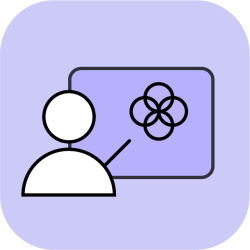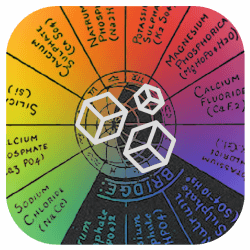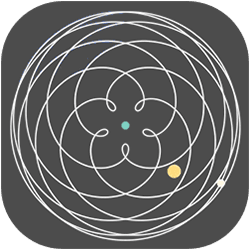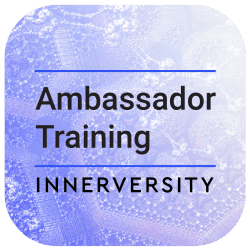Communication and connection are the building blocks of relationships. As evidenced by this insightful discussion, effective communication requires sensitivity, tact, and mutual understanding between all parties.
We explored various challenges and successes in communicating with family members from different generations and belief systems. Living authentically while respecting others’ perspectives was emphasized. Meeting others where they are, finding shared interests, and leading by positive example were presented as strategies for overcoming disconnects.
Central to the dialogue was the concept that communication and connection are intrinsically linked: without open communication, true understanding cannot develop. We delved into energetic dynamics and how imbalances internally or between individuals can stem from miscommunication. Resolving issues requires surrounding all parties with compassion and ensuring division remains off the table.
A recurring theme was the importance of self-mastery for effective communication. Understanding one’s energies, triggers, and growth areas through tools like life path numbers prepares one to communicate sensitively on others’ levels. Self-work helps remove projections and see exchanges as opportunities for mutual learning.
Overall, the discussion provided a nuanced look at communication’s challenges and rewards. Focusing on leading with empathy, finding shared values, and embracing growth as a continuous process were presented as keys to building strong relationships through clear self-expression and receptive listening.
Syllabus: Communication Mastery | A Pathway to Connection
I. Introduction to Communication Dynamics
A. Defining Communication and Connection
B. The Intrinsic Link Between the Two
C. Factors Impacting Effective Communication
II. Understanding Communication Challenges
A. Generational and Belief System Differences
B. Authentic Self-Expression vs. Projecting Onto Others
C. Recognizing Energetic Imbalances
III. Strategies for Effective Communication
A. Developing Self-Awareness
1. Understanding One’s Energies and Triggers
2. Employing Tools Like Life Path Numbers
B. Approaching Others With Sensitivity and Tact
1. Meeting People Where They Are
2. Finding Shared Values and Interests
C. Resolving Issues Through Compassion
1. Surrounding All Parties With Love
2. Ensuring Division Remains Off the Table
IV. Keys to Relationship and Community Building
A. Leading With Empathy, Not Projection
B. Embracing Continuous Learning and Growth
C. Valuing Receptiveness Alongside Self-Expression
V. Conclusion: Communication as the Pathway to Mastery, Connection and Beyond
Core Concepts
Communication and Connection
Communication and connection are intrinsically linked – without open communication, true understanding and connection cannot develop. Communication allows for the exchange of thoughts, feelings, and energy between individuals, while connection refers to the bond that is formed through this exchange. Effective communication is key to building strong relationships.
Sensitivity and Tact
Sensitivity and tact are essential qualities for communicating effectively. Sensitivity involves being attuned to others’ energies, triggers, and where they are mentally and emotionally. Tact refers to communicating in a thoughtful, considerate manner that avoids offending others or exacerbating tensions. Sensitivity and tact help ensure exchanges remain constructive.
Generational and Belief System Differences
Differences in generations, belief systems, values, and perspectives can pose challenges to communication between individuals and groups. Younger generations may see the world differently than older relatives steeped in tradition. Finding understanding requires respecting others’ positions while authentically expressing one’s own.
Self-Awareness
Gaining self-awareness of one’s energies, triggers, growth areas, and personality traits is crucial preparation for sensitive communication. Tools like numerology can provide self-insight. With self-understanding comes the ability to communicate without projecting and to see exchanges as opportunities for mutual learning.
Meeting People Where They Are
To effectively engage others, it is important to meet them at their level of understanding rather than demanding they adopt your perspective. Finding shared interests and values provides common ground to build upon through respectful discussion.
Leading With Empathy
Rather than accusation or projection, leading with empathy, compassion and consideration of others’ experiences fosters open communication. Empathy involves suspending one’s own biases to understand another’s viewpoint.
Surrounding With Love
When resolving issues, surrounding all parties with love through a compassionate, unified approach helps diffuse tensions and reassures no one feels attacked. Love and unity promote resolution over division.
Continuous Learning
Effective communication and relationships require embracing growth as a continuous, lifelong process. No one arrives at a destination point – there is always more to understand about oneself and others through open-minded learning.
Receptiveness
Along with clear self-expression, cultivating receptiveness to others’ perspectives is key. Receptiveness involves listening with an open heart and mind rather than formulating one’s response during another’s speaking turn.
Mastery Through Connection
Mastering communication and relationships is a pathway to greater self-mastery, stronger community, and realization of one’s highest potential through connection with others. Communication allows individuals to support each other through both challenges and successes.
Definitions
Tact – The ability to deal with others or with difficult issues in a sensitive, wise, and effective way. As discussed in the conversation, tact involves being mindful of others’ perspectives and choosing words and actions carefully.
Projection – The attribution of one’s ideas, feelings, or attitudes to other people or things as a defense against anxiety or to deny/rationalize one’s unacceptable impulses. In the context of the conversation, projection refers to making assumptions about others based on one’s internal state rather than seeking to understand from their point of view.
Energetic imbalance – A lack of harmony or equilibrium between different aspects of one’s energy system (physical, mental, emotional, spiritual). The conversation explored how imbalances within oneself or between individuals can stem from miscommunication and be resolved through greater understanding.
Triggers – Events, experiences, or other stimuli that cause an emotional reaction, often an unpleasant or uncomfortable one. The discussion noted the importance of self-awareness regarding one’s triggers to communicate sensitively with others.
Life path numbers – A system of numerology that analyzes numbers derived from a person’s full name and date of birth to understand their core strengths and challenges. In the conversation, life path numbers were presented as a tool for gaining self-knowledge to improve communication skills.
Focus Points
- Self-awareness
- Active listening
- Respectful expression
- Issue resolution
- Personal growth
Objectives
Self-awareness: Understanding one’s energies, triggers, and personality traits through tools like numerology to communicate sensitively.
Active listening: Cultivating receptiveness to listen without judgment and formulating a response until it’s one’s turn to speak.
Respectful expression: Authentically expressing oneself while meeting others where they are mentally and respecting different viewpoints.
Issue resolution: Surrounding all parties with compassion through a unified, non-divisive approach that reassures no one feels attacked.
Personal growth: Embracing communication improvement and relationship building as continuous, lifelong learning through keeping an open mind and heart.
Procedure
1. Understand the intrinsic link between communication and connection by recognizing without open communication, true understanding cannot develop between individuals.
2. Grasp the importance of sensitivity and tact by appreciating their role in attuning to others’ perspectives and avoiding exacerbating tensions.
3. Identify challenges to intergenerational communication by acknowledging differences in viewpoints between those of varying beliefs and life experiences.
4. Realize the value of self-awareness by seeing how understanding one’s energies and triggers prepares one for sensitive exchanges.
5. Discover effective strategies for resolution by learning to surround all parties with compassion through a unified approach ensuring no one feels attacked.
6. Learn the keys to strong relationships by embracing continuous learning and growth through keeping an open mind and heart on the journey of self-understanding.
Tangible Results
By understanding the link between communication and connection, readers will gain the ability to build strong relationships through open expression that fosters true understanding between individuals. By grasping the importance of sensitivity and tact, readers will gain the skills to engage others constructively through thoughtful exchanges that avoid exacerbating tensions or offending differing perspectives. By identifying challenges to intergenerational communication, readers will gain strategies for overcoming disconnects through respecting others’ viewpoints while authentically expressing their own. By realizing the value of self-awareness, readers will gain self-knowledge and the ability to communicate without projecting to see exchanges as opportunities for mutual learning. By discovering effective resolution strategies, readers will gain the tools to resolve issues through a compassionate, unified approach that reassures no one feels attacked to find a common understanding. By learning the keys to strong relationships, readers will gain the capacity for continuous improvement and connection with others through embracing growth as a lifelong journey of mutual understanding.






















